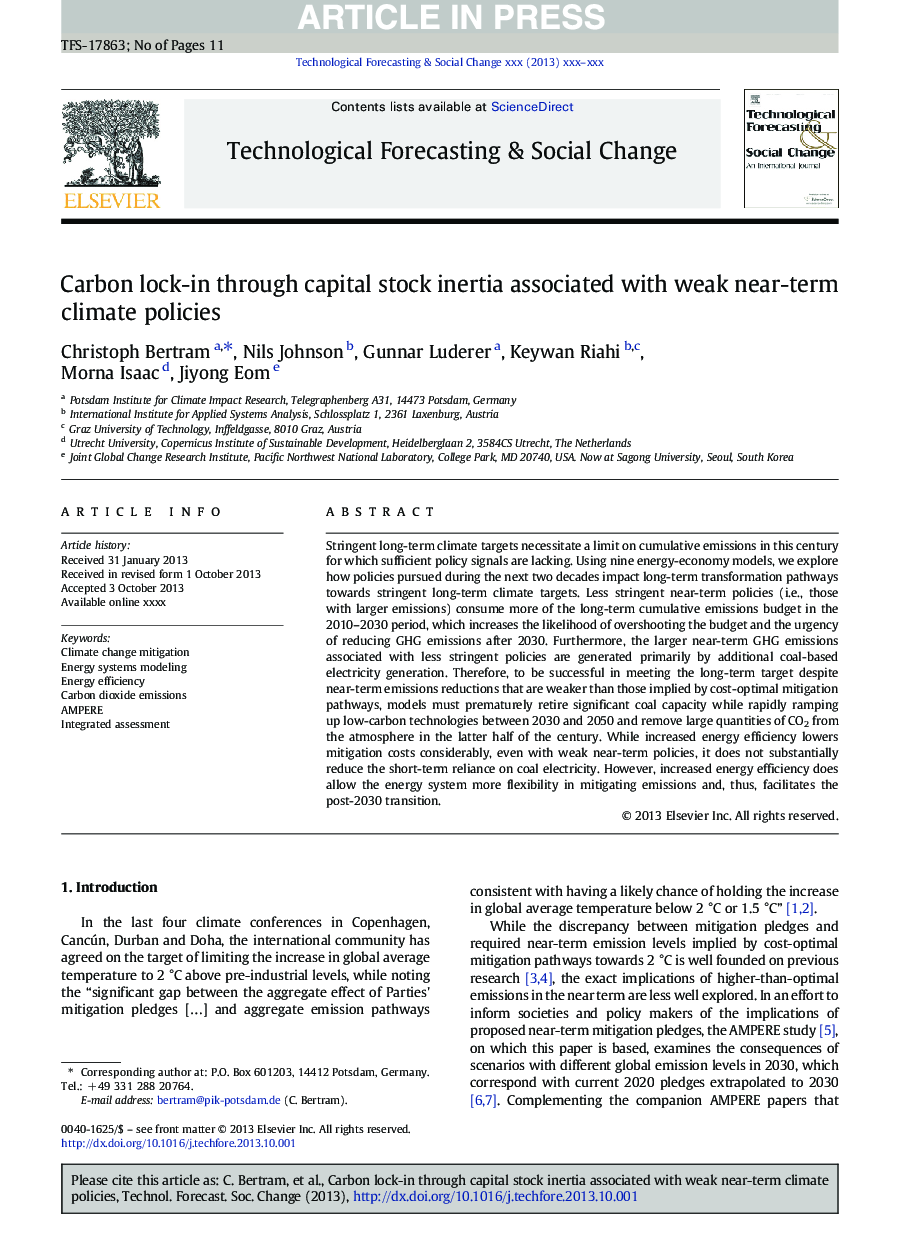| Article ID | Journal | Published Year | Pages | File Type |
|---|---|---|---|---|
| 10442525 | Technological Forecasting and Social Change | 2015 | 11 Pages |
Abstract
Stringent long-term climate targets necessitate a limit on cumulative emissions in this century for which sufficient policy signals are lacking. Using nine energy-economy models, we explore how policies pursued during the next two decades impact long-term transformation pathways towards stringent long-term climate targets. Less stringent near-term policies (i.e., those with larger emissions) consume more of the long-term cumulative emissions budget in the 2010-2030 period, which increases the likelihood of overshooting the budget and the urgency of reducing GHG emissions after 2030. Furthermore, the larger near-term GHG emissions associated with less stringent policies are generated primarily by additional coal-based electricity generation. Therefore, to be successful in meeting the long-term target despite near-term emissions reductions that are weaker than those implied by cost-optimal mitigation pathways, models must prematurely retire significant coal capacity while rapidly ramping up low-carbon technologies between 2030 and 2050 and remove large quantities of CO2 from the atmosphere in the latter half of the century. While increased energy efficiency lowers mitigation costs considerably, even with weak near-term policies, it does not substantially reduce the short-term reliance on coal electricity. However, increased energy efficiency does allow the energy system more flexibility in mitigating emissions and, thus, facilitates the post-2030 transition.
Keywords
Related Topics
Social Sciences and Humanities
Business, Management and Accounting
Business and International Management
Authors
Christoph Bertram, Nils Johnson, Gunnar Luderer, Keywan Riahi, Morna Isaac, Jiyong Eom,
